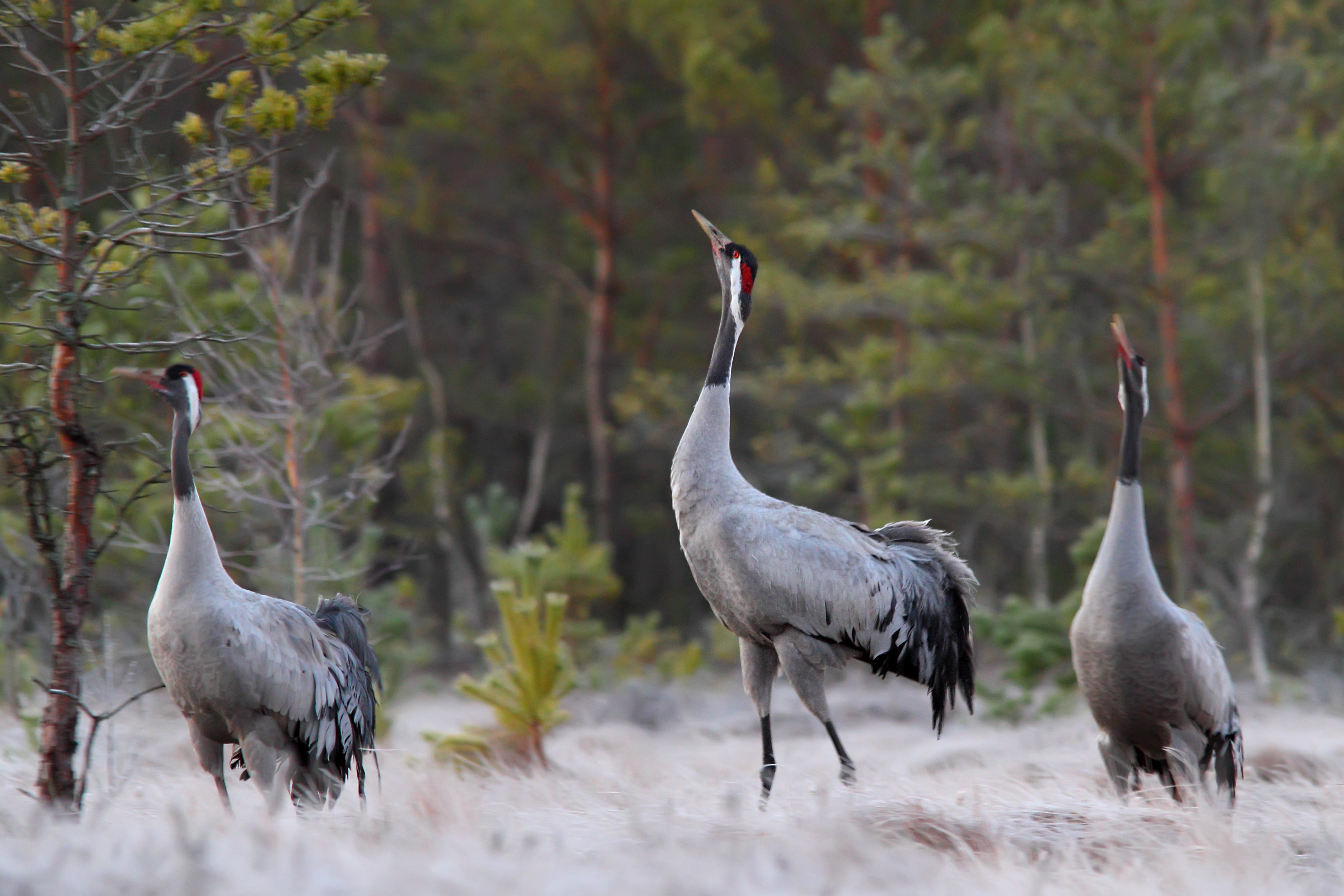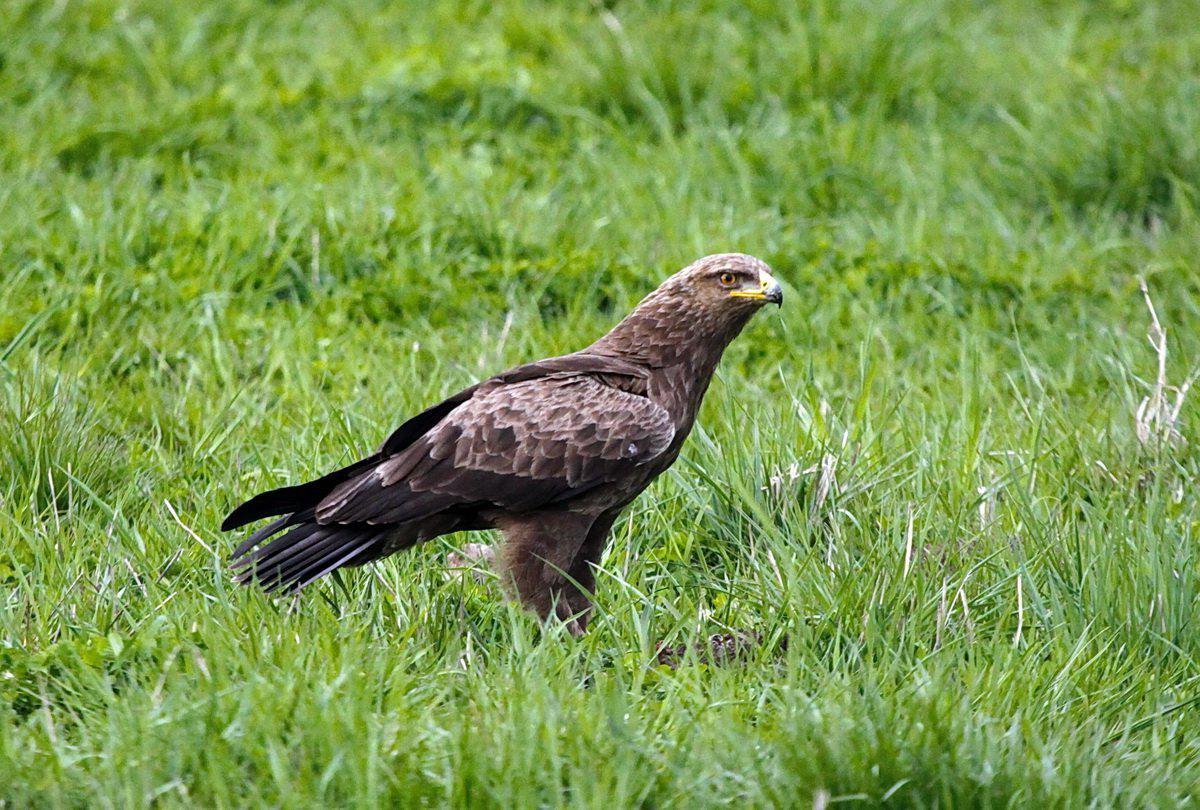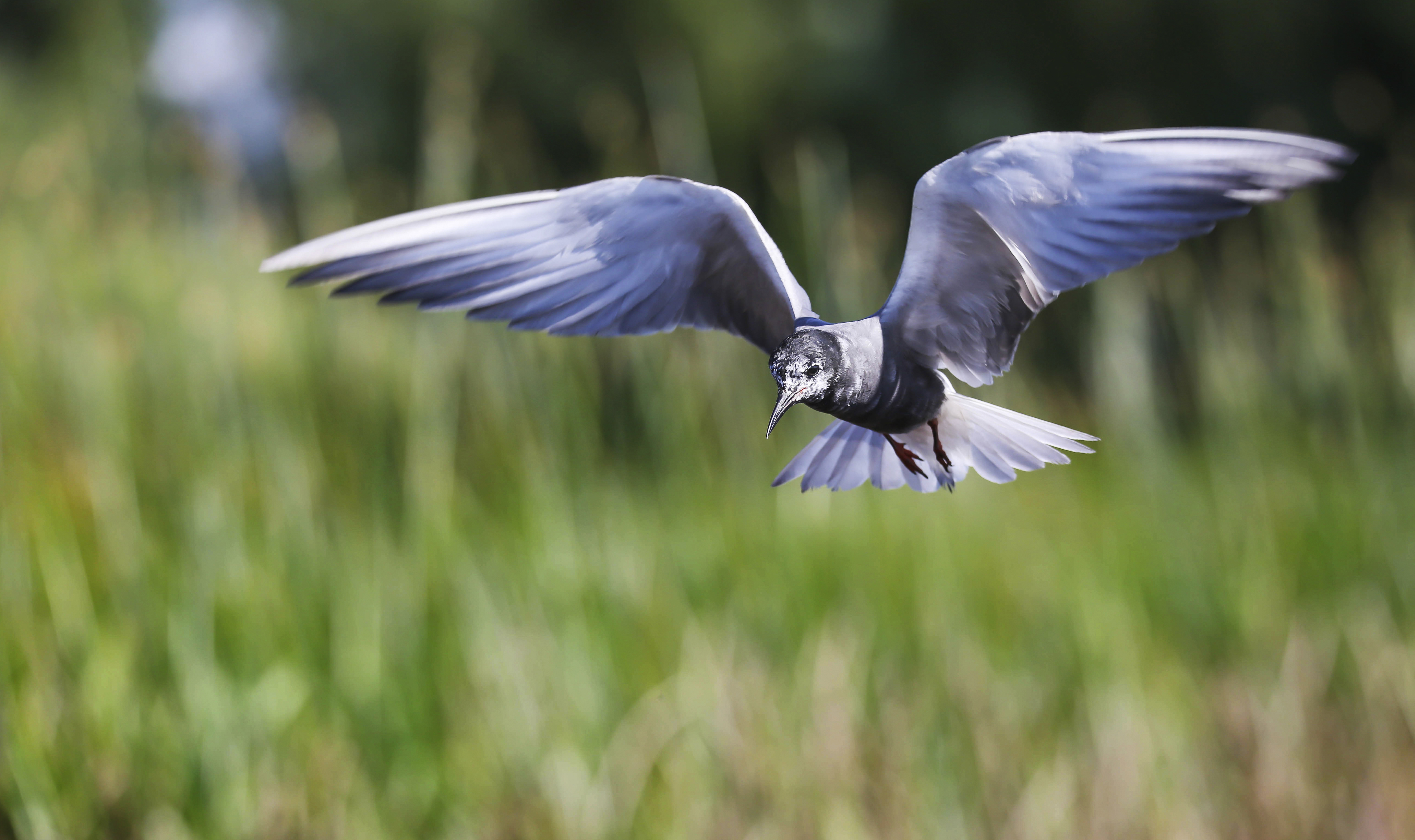UNDP helps create artificial nesting sites in Belarus' nature reserves to ensure conservation of rare bird species as the Greater Spotted Eagle, Eagle Owl, Great Grey Owl.
Artificial nesting as a way to care for birds
October 7, 2022

Grey Cranes. One of the important domains of the UNDP operations is the actions to conserve globally endangered species, including migratory birds.
October 8, The World Migratory Bird Day is an annual awareness campaign highlighting the need to conserve migratory birds and their habitats. This is the time of the year when birds fly to warmer climes traveling hundreds of kilometers searching for food and comfort. Today we also urge you to pay attention to the need to protect and take care of migratory birds, which are particularly vulnerable in the contemporary world.
The Wetlands UNDP project established artificial nesting sites in the Sporovsky and Zvanets and Olmany wetland sanctuaries to ensure conservation of such rare migratory bird species as Greater Spotted Eagle, Eagle Owl, Great Grey Owl, etc.

Greater Spotted Eagle. The Red Book bird species in Belarus.
One of the factors limiting bird populations is the lack of nesting sites. Diurnal birds of prey are nest-conservative usually: they prefer to occupy legacy or abandoned nests rather than to build new ones. At the same time, other competing species occupy the nests often. Trees can also die due to various adverse climatic conditions (windfalls, heavy snowfalls), and nests are destroyed therefore. According to international practices, installation of artificial nests can increase bird populations.
Making nesting platforms, which are installed on trees or poles and designed mainly for birds of prey, is called platforming. Platform construction is currently used to attract a range of bird species for breeding. In forests, large birds of prey are usually attracted to nesting by platforms; birds like Osprey, Snake Eagle, White-Tailed Eagle and eagles are specifically meticulous about tree crowns.
Artificial nesting platform
Why do people attract birds to breed on nesting platforms? Firstly, this is to protect them. Forest fires, logging and other negative impacts on forest ecosystems lead to a reduction in the habitats of large tree-nesting species. Rejuvenated and secondary forests clearly lack trees capable to host a massive nest in the crown. Therefore, installing nesting platforms in such forests facilitates maintenance of the nesting fund, increases bird populations, or even new nesting groups of large birds of prey set up. Secondly, in addition to the environmental effect, platforming addresses issues related to the studies of nesting biology, bird monitoring, etc. In addition, which is equally important, “well-known convenient” nests can be actively used to promote ecotourism.
Under the Wetlands project, 44 artificial nests were installed in the Zvanets, Olmany and Sporovsky nature reserves in 2019 through to 2021. Annual inventories identified that the predominant number of the nests had signs of obvious visitation by birds of prey. According to experts, the nests were occupied by Greater Spotted Eagle, Great Grey Owl, possibly by Lesser Spotted Eagle and Common Buzzard. In the future, it is planned to continue monitoring the occupancy of artificial nests, which will make it possible to more fully demonstrate the success of this action and to evaluate the effectiveness of the methodology and the materials used for building nests, their locations, bird preference for specific microbiotopes, etc.

Black tern. Migratory birds need our care and protection; the process of their migration is a key indicator of biodiversity; birds maintain and preserve the ecological balance in a number of ecosystems.

 Locations
Locations



